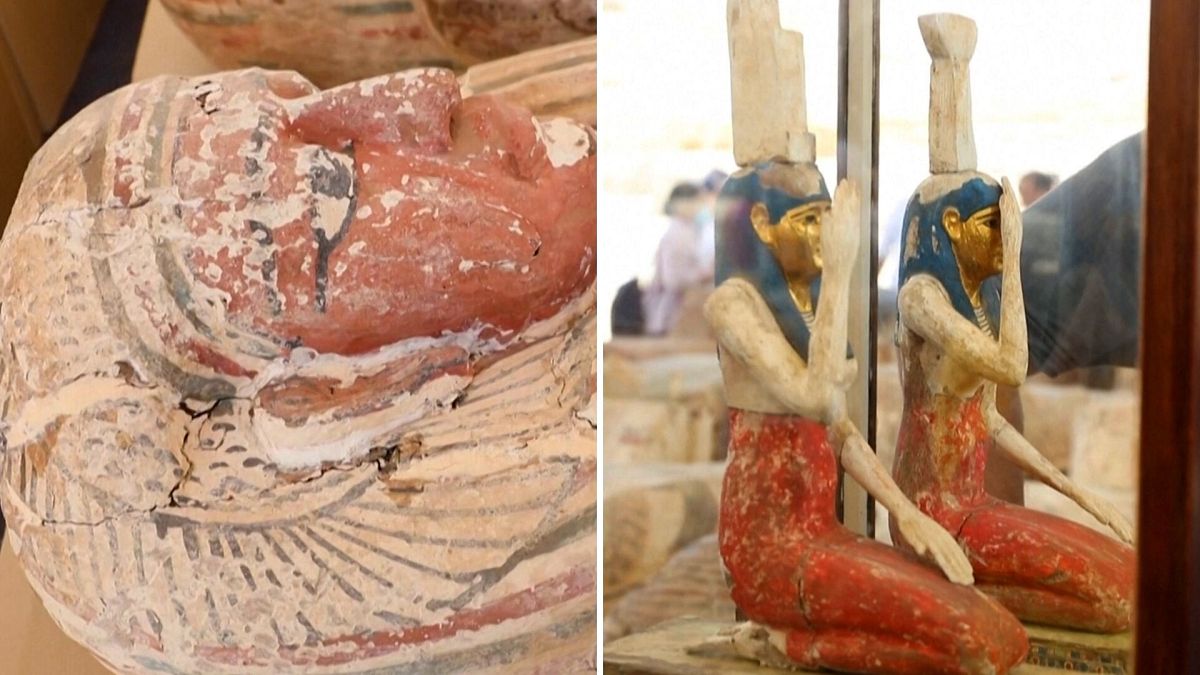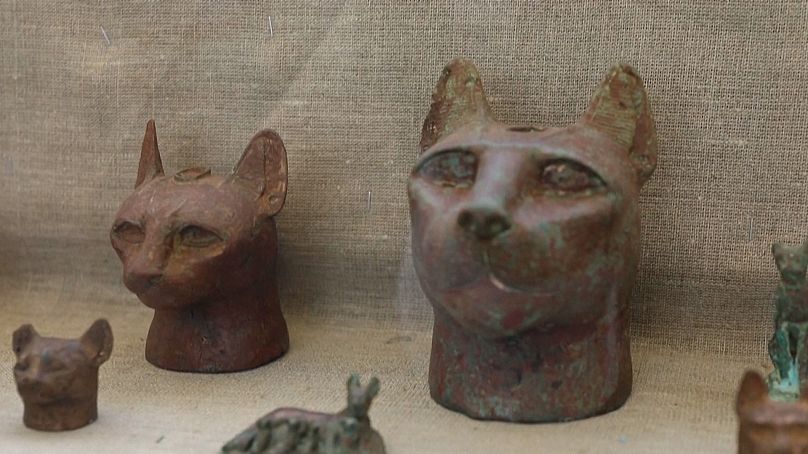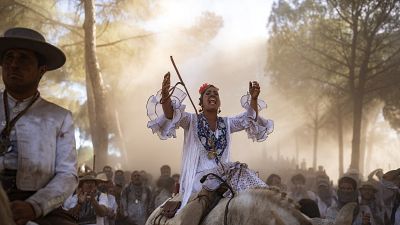Egyptian archaeologists have unveiled a cache of 150 bronze statues depicting various gods and goddesses including "Bastet, Anubis, Osiris, Amunmeen, Isis, Nefertum and Hathor," along with 250 sarcophagi at the Saqqara archaeological site south of Cairo
Archaeologists in Saqqara, Egypt have unveiled a massive haul of recently discovered relics to the public.
A cache of sarcophagi and bronze statuettes are now on display at the Saqqara archaeological site, south of Cairo.
Among the 150 bronze statuettes unearthed is one of Imhotep, who "revolutionised architecture" in the ancient world, Mostafa Waziri, head of Egypt's Supreme Council of Antiquities, told reporters.
Imhotep, who lived in the third millenium BC, built the Djoser step pyramid, one of the earliest in ancient Egypt. He was later deified as the god of medicine.
Saqqara is a vast necropolis of the Egyptian capital Memphis. It's a UNESCO World Heritage site and is home to more than a dozen pyramids and animal burial sites.
Other discoveries
Several other statuettes of Egyptian gods and goddesses were unearthed, including ones depicting Bastet, Anubis, Osiris, Amunmeen, Isis, Nefertum and Hathor.
The archaeological mission also unveiled 250 wooden sarcophagi with mummies inside, dating back to the fifth century BC, according to Waziri.
Inside one sarcophagus, the team found an untouched and sealed papyrus, he said. It has been transferred to the laboratory of the Egyptian Museum in central Cairo for full restoration and study.
He added that the papyrus - estimated to be nine metres (9.9 yards) long - likely contains chapters of the Book of the Dead, collections of funerary texts composed of spells that Egyptians used to guide the dead through the underworld.
The artefacts will be moved to a permanent exhibit at the upcoming Grand Egyptian Museum, a project still under construction near the famed Giza Pyramids, just outside Cairo.
Hopes are high that the new museum, in addition to archaeological discoveries of recent years, will help revive the country's vital tourism industry.
Check out the video above for a look at the newly discovered priceless artefacts




